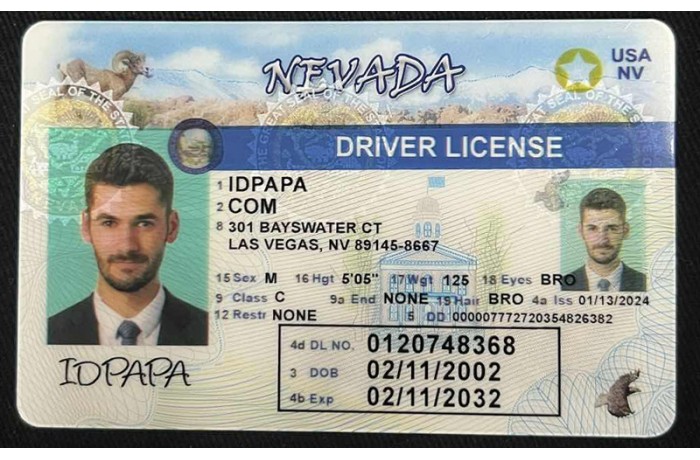The Evolving Landscape of Digital Identity: Trends Shaping the Future
The Evolving Landscape of Digital Identity: Trends Shaping the Future
Blog Article
The digital realm undergoes a rapid transformation in how we authenticate ourselves online. Emerging technologies are altering the concept of digital identity, creating both possibilities and driving a more sophisticated online experience. Blockchain are emerging as key players in this space, providing users with greater control over their data and {identities|. This trend has the potential to shape various sectors, including finance, healthcare, and government.
- Some key trends driving this transformation:
- Facial recognition
- Artificial intelligence (AI)
- The rise ofthe metaverse
Addressing these shifts is crucial for {individuals|, businesses, and governments to ensure a safe, trustworthy digital future.
Countering ID Fraud: Strategies for a Secure Digital World
In today's increasingly digital landscape, identity deceit poses a significant threat to individuals and organizations alike. To effectively combat this growing menace, it is essential that we implement robust security measures and foster a culture of awareness.
Leveraging multi-factor authentication, regularly updating software and devices, and practicing strong password hygiene are primary steps in safeguarding against ID illegality. Furthermore, educating users about the dangers of phishing scams and other social engineering tactics is indispensable.
Partnership between governments, businesses, and individuals is essential to creating a secure digital environment. By working together, we can minimize the impact of ID fraud and safeguard our valuable information in an increasingly interconnected world.
Exploring the Legal Labyrinth: copyright Laws and Their Implications
The sphere of fake identification presents a complex legal landscape. Laws surrounding these artifacts vary widely across jurisdictions, creating a tangled web for both individuals and agencies.{ Possession of a copyright can lead in severe ramifications, including fines, imprisonment, and past offenses. Moreover, the procurement of these fraudulent documents can sometimes be connected to more serious offenses, further underscoring the significance of compliance with these laws.
Harnessing Biometrics for Unrivaled Security in Digital IDs
The digital realm is rapidly evolving, necessitating robust security measures to safeguard sensitive information. Person-Specific Identifiers, the science of measuring and analyzing inherent human characteristics, presents a compelling solution for enhanced security within digital ID systems. Harnessing biometrics like fingerprint scanning, facial recognition, or iris verification, digital identities can be authenticated with unprecedented accuracy and resilience against fraud. This technology not only simplifies identity verification processes but also establishes a secure framework for managing critical personal data in an increasingly interconnected world.
Traditional methods pale in comparison to the benefits of biometric security|. They are inherently difficult to forge or replicate, reducing the risk of unauthorized access and identity theft. Moreover, biometrics simplify user interaction, as users can conveniently verify their identities without relying on physical tokens.
- Despite these benefits| , it is crucial to address potential concerns surrounding biometrics, including data privacy and the possibility of breaches. Robust regulatory frameworks and ethical guidelines are essential to ensure responsible implementation and mitigate any negative consequences.
Balancing Convenience and Privacy: The Ethical Considerations of Biometric Authentication
Biometric authentication presents a convenient way to verify users. However, the widespread implementation of this technology raises significant ethical concerns. Maintaining biometric data involves a unique set of challenges to user privacy, as this information is uniquely personal and unalterable. Moreover, the potential for misuse of biometric data by malicious actors demands careful consideration concern.
A delicate balance must be struck between the advantages of convenience and the necessity to protect user privacy. Stringent safeguards, such as secure storage, explicit consent mechanisms, and strict regulations are critical to mitigate these Ethical concerns in surveillance risks and ensure the ethical utilization of biometric authentication.
Ultimately, the goal should be to harness the benefits of this technology while protecting the fundamental right to privacy.
Strengthening Trust: Best Practices for Implementing Secure Digital Identity Solutions
In today's increasingly digital world, secure digital identity solutions are paramount to fostering trust and securing sensitive information. To effectively implement these systems, organizations must adhere to best practices that prioritize privacy, transparency, and adaptability. A key component involves implementing multi-factor authentication procedures to verify user identity. Additionally, regular audits and vulnerability assessments are crucial for identifying and mitigating potential risks. By adhering to these best practices, organizations can create a secure and trustworthy environment for users while reducing the risk of fraud and data breaches.
 Report this page
Report this page